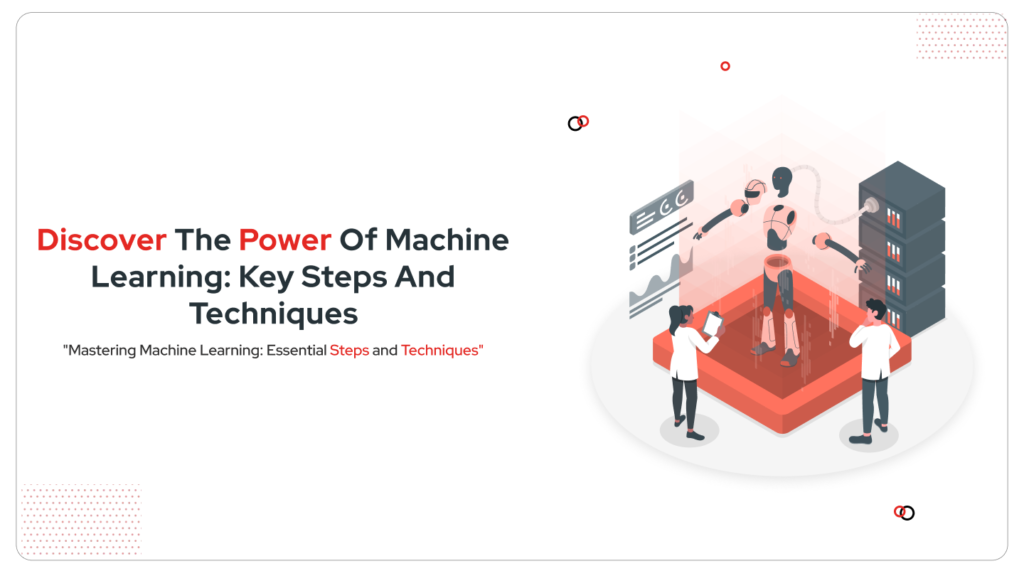
Machine learning for beginners might seem intimidating, shrouded in complex algorithms and lines of code. But fear not! This comprehensive guide will break down the core concepts of machine learning in a way that’s easy to understand, even for those with no prior technical background.
Introduction to Machine Learning
Let’s start by understanding what machine learning truly is. It’s a subfield of Artificial Intelligence (AI) that allows computers to learn without explicit programming. Imagine a student who learns by studying examples and practicing. Machine learning algorithms do the same – they analyze data to identify patterns and relationships, and then use those insights to make predictions or classifications on new data.
Difference between Artificial Intelligence and Machine Learning
Artificial intelligence (AI) is a broader concept encompassing any machine that exhibits human-like intelligence. Machine learning is a specific technique within AI that relies on data to achieve this intelligence. Here’s an analogy: AI is like the human brain, with its vast potential for learning and reasoning. Machine learning is like the brain’s specific learning method, such as learning from experience.
Also Read: Difference Between Machine Learning and Artificial Intelligence
Getting Started with Machine Learning: Key Steps
- Understanding the Problem
The first step is identifying a problem you want the machine to solve. Is it predicting customer churn, classifying emails as spam, or recommending products? Clearly defining the problem helps choose the right approach.
- Data Acquisition
This is where the magic happens! Machine learning thrives on data. You’ll need a high-quality dataset relevant to your problem. Ensure the data is clean, organized, and sufficient for training the model effectively.
- Data Preprocessing
Raw data often needs cleaning and preparation before feeding it to the model. This might involve handling missing values, converting formats, and scaling numerical data.
- Choosing a Machine Learning Model
There are different types of machine learning models suited for various tasks. Here’s a glimpse into the most common ones:
- Supervised Learning: The model learns from labeled data, where each data point has a corresponding output (like classifying emails as spam or not spam).
- Unsupervised Learning: The model identifies patterns in unlabeled data, uncovering hidden structures or groupings (like customer segmentation).
- Reinforcement Learning: The model learns through trial and error in a simulated environment, receiving rewards or penalties for its actions (like training an AI agent to play a game).
- Model Training
This is where the learning happens! The chosen model is trained on the prepared data, allowing it to identify patterns and relationships.
- Model Evaluation
Once trained, the model’s performance is evaluated on a separate dataset (testing data) to assess its accuracy and generalizability.
- Model Deployment
If satisfied with the evaluation results, the model can be deployed to make real-world predictions or automate tasks.
Easy Machine-Learning Techniques for Beginners
Even as a beginner, you can delve into the fascinating world of machine learning with some easy machine-learning techniques. Here are a few to get you started:
- Linear Regression
This is a supervised learning technique used for predicting continuous values, like house prices or stock market trends. Imagine drawing a best-fit line through a scatter plot of data points. That line represents the linear regression model’s prediction.
- Logistic Regression
Another supervised learning technique, logistic regression predicts binary outcomes – yes or no, spam or not spam. It’s like a switch that flips to one side or the other based on the input features.
- K-Nearest Neighbors (KNN)
This is a simple yet effective technique for both classification and regression. It classifies a new data point by looking at the labels of its nearest neighbors in the training data.
Real-Life Examples of The Potential of Machine Learning
- Recommendation Systems
Machine learning powers recommendation systems that suggest products or content tailored to individual preferences based on historical user behavior. For instance, Netflix uses these systems to recommend shows and movies that align with a user’s viewing history.
- Fraud Detection
Machine learning algorithms are utilized to scrutinize financial transactions, identifying patterns indicative of fraudulent activity. An example is credit card companies employing these systems to detect and prevent fraud by analyzing transaction data in real-time.
- Medical Diagnosis
In healthcare, machine learning aids in the analysis of medical images and data, providing critical support for diagnostic decisions. For example, algorithms can detect cancerous cells in X-rays, assisting doctors in early and accurate cancer diagnosis.
- Self-Driving Cars
Self-driving car technology leverages machine learning to interpret and act upon vast amounts of sensor data. Companies like Tesla train their autopilot systems to navigate roads safely and efficiently, learning from numerous driving scenarios and conditions.
The Future of Machine Learning
As machine learning continues to evolve, we can expect even more groundbreaking applications. We’ll see advancements in areas like Explainable AI (XAI), making machine learning models more transparent and understandable, which will build trust and facilitate their integration into critical sectors such as healthcare and finance. Natural Language Processing (NLP) will further enable machines to understand and generate human language more effectively, enhancing communication between humans and machines, and revolutionizing customer service and accessibility tools.
Additionally, computer vision will equip machines with advanced image and video analysis capabilities, opening new possibilities in fields like autonomous driving, security, and medical imaging. These advancements will not only enhance current technologies but also pave the way for innovations that will profoundly impact society, making machine learning an indispensable part of our future.